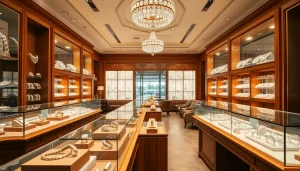Indulge in the Sweet Elegance of Crystal Candy: A Journey Through Flavors and Traditions
Understanding Crystal Candy: Origins and Types
1. The History Behind Crystal Candy
Crystal candy, recognized for its jewel-like appearance and delicate sweetness, has a rich history that traces back to various cultures around the globe. The concept of crystallized sugar dates back thousands of years, with its earliest forms likely originating in ancient civilizations where sugar was harvested and crystallized into edible candy. However, crystal candy, particularly as we know it today, finds its roots deeply embedded in East Asian culinary traditions, especially Japan.
Kohakutou, a traditional Japanese crystal candy, also known as amber candy, became foremost in popular culture during the Edo period (1603-1868). Made from agar and sugar, it was characterized by its glistening appearance and unique texture. Similarly, in Vietnam, a variant of this treat often found its way into festive occasions, bringing a unique blend of flavors and textures that tantalized the palates of everyone. Today, crystal candy is often crafted for various celebrations and has become a symbol of sophistication in culinary arts.
2. Variations of Crystal Candy Across Cultures
The beauty of crystal candy is its diversity, as it takes on different forms and flavors depending on the region. In Japan, the aforementioned Kohakutou is not only celebrated for its aesthetic appeal but also for its remarkably chewy texture. Meanwhile, in Vietnam, crystal candy typically features a more robust flavor profile, often infused with local ingredients such as coconut, mango, or even matcha green tea.
In other regions of Asia, crystal candy variations are prevalent too. For instance, in Thailand, one can discover a version called ‘Nam Wan’, made from various fruit juices and coconut milk, forming an entirely different flavor experience. The artistry behind each type of crystal candy reflects localized flavors and cultural significance, showcasing the ingenuity and culinary heritage of each respective country.
3. Key Ingredients in Making Crystal Candy
When it comes to creating crystal candy, the ingredients play a vital role in determining its flavor, texture, and appearance. The main components typically include:
- Sugar: The primary ingredient that provides sweetness and essential structure to the candy.
- Agar Agar: A crucial gelatin substitute derived from seaweed, instrumental in forming the chewy texture of the candy.
- Flavoring Agents: Such as fruit juices, extracts, or local ingredients that enhance the taste and aroma of the candy.
- Colorants: Used to attractively tint the candy, making it visually appealing and a delightful treat to the eyes.
These ingredients, combined in specific ratios, yield the gloriously colorful and delicious crystal candies that are cherished worldwide.
Flavor Profiles: What Makes Crystal Candy Irresistible
1. Sweetness and Texture Explained
One of the hallmarks of crystal candy is its unique texture and the gradual release of flavors as it dissolves in the mouth. The candy’s primary sweetness comes from the high sugar content, which provides a satisfying taste experience. But what sets crystal candy apart is the balance between the candy’s crunchy outer layer and its chewy inner core, resulting from the use of agar.
This textural contrast is critical—it not only enhances the overall enjoyment but also plays into how flavors are perceived over time. The sweetness may linger, allowing the taster to savor the epicurean delight of each bite. It is this duality of taste and texture that appeals to many, making crystal candy a favorite among those with a sweet tooth.
2. Popular Flavors and Combinations of Crystal Candy
Crystal candy is rich in flavor, boasting a variety of profiles that are both traditional and contemporary. Some popular flavors include:
- Matcha: Infused with green tea powder for a subtly bitter yet sweet taste.
- Coconut: Offering a tropical twist that complements the candy’s texture.
- Fruit Flavors: Such as strawberry, lemon, and lychee, providing refreshing notes.
- Chocolate: A decadent option that mixes rich cocoa with the candy’s inherent sweetness.
These flavors can be mixed and matched to create unique combinations, expanding the appeal of crystal candy, especially to international markets and contemporary tastes. Seasonal flavors also emerge around holidays and festivities, allowing consumers to experiment with new palate options.
3. How to Pair Crystal Candy with Other Treats
The versatility of crystal candy makes it an excellent pairing option with numerous desserts and beverages. Here are some pairing suggestions:
- Tea: Crystal candy can be enjoyed with green tea, where its sweetness counterbalances the tea’s mild bitterness.
- Desserts: Use it as a garnish atop cakes, pastries, or even ice cream to visually enhance the dessert and add an exciting textural element.
- Charcuterie Boards: Include crystal candy on a board alongside cheeses and other savories for a touch of sweetness.
These pairings elevate the overall dining experience and demonstrate the adaptability of crystal candy as both a standalone treat and an accompanying flavor enhancer.
DIY Guide: How to Make Your Own Crystal Candy at Home
1. Ingredients and Tools You’ll Need
Creating your own crystal candy is an enjoyable and rewarding process. To get started, gather the following ingredients and tools:
- Ingredients:
- 1 cup of sugar
- 1 cup of water
- 2 tablespoons of agar agar powder
- Flavoring (juice or extract of your choice)
- Food coloring (optional)
- Tools:
- A saucepan
- A mixing spoon
- Mold (silicone works best)
- A refrigerator or a cool place for setting
- Storage containers for the final product
These simple ingredients and tools will enable you to create stunning crystal candy in a variety of flavors.
2. Step-by-Step Recipe for Perfect Crystal Candy
Follow this straightforward recipe for making delicious crystal candy:
- In a saucepan, combine the water and agar agar powder. Stir until fully dissolved.
- Add the sugar and continue heating while stirring until the mixture reaches a gentle boil.
- Remove from heat and mix in your desired flavors and food coloring.
- Pour the hot mixture into your molds and let it cool at room temperature before transferring to the refrigerator.
- Once set (approximately 1-2 hours), pop the candy out of the molds and enjoy!
3. Tips for Achieving the Best Results
While making crystal candy at home can be simple, a few tips can help achieve the best results:
- Ensure that you properly dissolve the agar agar to avoid clumps in your candy.
- Experiment with different flavor combinations and colors to personalize your creations.
- Store the candy in an airtight container to keep it fresh and preserve its texture.
With these tips, you’re well on your way to becoming a crystal candy connoisseur in your own kitchen.
Health Considerations: Is Crystal Candy a Treat You Can Enjoy?
1. Nutritional Information and Possible Allergens
Before indulging in crystal candy, it’s essential to consider its nutritional profile and any potential allergens. Typically, the main allergens include:
- Sugar (high in calories)
- Agar agar (derived from seaweed, generally safe unless you’re allergic to seaweed)
Regarding nutritional value, crystal candy provides little in terms of vitamins or minerals, primarily offering a quick source of energy through sugars. Moderation is key; enjoying this treat occasionally means you can savor it without overwhelming your diet.
2. Moderation: Enjoying Crystal Candy Responsibly
Like most candies, crystal candy should be enjoyed in moderation. The high sugar content can contribute to various health concerns, including weight gain and dental issues. It’s crucial to balance sweets with a healthy, well-rounded diet and maintain an active lifestyle.
Incorporating crystal candy as a rare indulgence rather than a daily treat can help you maintain a healthy lifestyle while still enjoying flavors and textures that excite your palate.
3. Healthier Alternatives to Traditional Crystal Candy
For those seeking a healthier alternative to traditional crystal candy, consider trying homemade versions with natural sweeteners like agave syrup or honey. You could also explore recipes that utilize fruit purees to add sweetness and flavor without relying solely on sugar.
Additionally, opting for reduced-sugar recipes that incorporate whole ingredients can help provide a candy-like experience while reducing empty calories. It allows for the creation of visually appealing and tasty treats that can be enjoyed without the guilt.
Where to Buy Crystal Candy: A Shopper’s Guide
1. Top Online Retailers for Crystal Candy
Purchasing crystal candy is easier than ever, with numerous online retailers specializing in this exquisite treat. Websites like crystal candy vendors can offer a vast selection, including unique flavors and artisanal varieties. Sites such as Silky Gem and Amazon also provide a wide range of options for consumers looking to indulge in crystal candy without the hassle of homemade efforts.
2. Finding Local Shops Carrying Crystal Candy
Local Asian markets or specialty candy shops may stock crystal candy, particularly during festive seasons. It often pays to inquire at these regional stores as they may offer unique flavors not found online. Additionally, bakeries specializing in international sweets might also carry crystal candy as part of their offerings.
3. Seasonal Specials: When to Look for Crystal Candy Deals
Crystal candy often sees an uptick in availability during special occasions such as Lunar New Year or other festive holidays. Many retailers tend to promote seasonal collections, often at discounted prices, making it the perfect time to explore various flavors and indulge without overspending. Keeping an eye out for these promotions can yield not only economic advantages but also the chance to try new varieties of this delightful treat.



